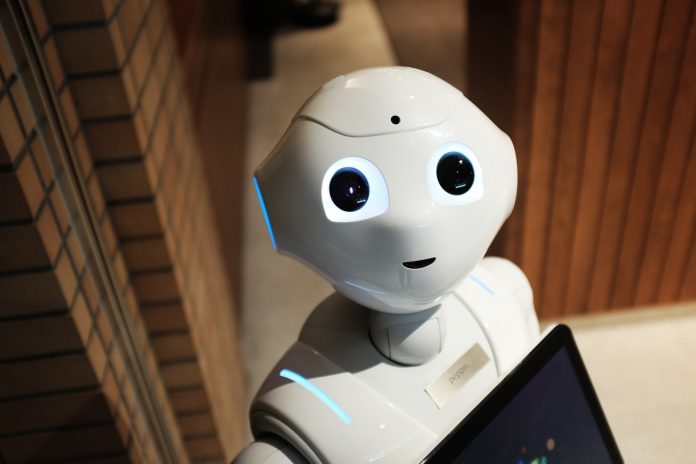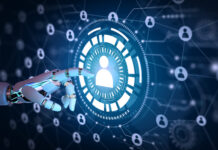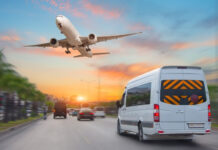COVID-19 made massive changes to the way we conduct and manage our workplaces. These changes have more people than ever working from home, while those that remain in a traditional workspace must accommodate safety and social distancing mandates.
As the changes caused by COVID-19 reshape the way we work, one solution becomes increasingly more viable and necessary: automation. The use of machines and computer systems to increase efficiency in business practices and keep employees safe could bolster the economy post-COVID. As a result, businesses should brace for a wave of automation in the near future.
A host of industries will be impacted by the coming shift to automation. From transportation to consumer processes, automated practices will propagate in the post-COVID world, changing the ways we do business.
Here’s what you should be prepared for in the wave of automation to come.
Transportation
Few industries may see as many changes in the near future as transportation. With fully automated vehicles on the horizon, the potential for freight and human transportation to entirely transform is massive. Driverless trucking demonstrations are on schedule for 2021 and beyond, with the reality of these trucks transporting our goods right around the corner.
With automation on this scale, everything from fleet management to traditional public transportation may shift. These automated processes are designed to save money and protect individuals. In the wake of COVID, little is more important.
Here are some of the ways new automation tech in the transportation industry is already here or not far off.
Driverless Vehicles
Popularized in the media by companies like Tesla and Uber, the future of fully autonomous vehicles is on the horizon. This technology exists on a scale, with 0 meaning the driver has full control and 5 being full automation. Levels of automation have already made their way to vehicles on the road, while complete automation—where the passenger does not need to take any control of the vehicle—is still in the works.
Driverless vehicles will change the face of transportation. Artificial intelligence can potentially make for safer roads through split-second analysis and decision making at a level that humans cannot match. Additionally, the effect of this shift for those currently employed as truck drivers means mass layoffs or the redefinition of the job on the whole.
In the wake of COVID, businesses are looking to integrate processes like this that can save them money and increase safety. Driverless vehicles are nearly here. When they arrive, the cost savings and efficiency for shipping and public transportation means a completely different system than what we currently have.
AI Data Tracking and Fleet Management
Automation isn’t just coming to the vehicles themselves. Data tracking and analytics tools that automatically scan and report valuable metrics to drivers and fleet managers are changing the transportation industry. Some companies report that integrating this technology is saving as much as $4,000 per truck.
With dash cams and sensors capable of reporting and analyzing driver behavior through AI, transportation is becoming increasingly efficient. This tech allows recommendations and warnings to happen all through a smart system, keeping drivers safe and awake.
Additionally, the need for intuitive supply chain systems is great in the COVID world. Demand fluctuations atop supply chain disturbances mean managers need real-time updates on where to pick up and deliver goods. Automated systems can manage instantaneous communication to maintain efficiency and reduce fuel costs while businesses navigate rapidly evolving situations.
Public Transportation Innovations
COVID-19 has meant new processes for public transportation systems. Sanitation must be maintained alongside reasonable social distancing measures. Automation in the industry can allow for a greater focus on these important policies while keeping costs low.
With driverless or partially automated systems for public transportation, workers once needed for vehicle operations can dedicate time and attention to other safety measures. As modern needs require diverse options for public transportation, automated rail systems and busses will likely emerge as a more common installation for navigating cities.
The impacts of this new technology allow for enhanced safety and equitability among everyday passengers. When it comes to ride sharing, passengers would no longer need to take a risk in getting in a stranger’s vehicle.
As we attempt to eliminate health risks in our daily lives in the post-COVID world, the changes automation is bringing to transportation are more valuable than ever. Better technology and higher demand will see these technologies grow in the near future.
Consumer Processes
All things digital are encountering changes due to technological innovations and the needs of a pandemic world. Not even customer service practices are immune from some automation. As AI systems become more usable and efficient, automation is reaching the service sector.
Through chatbots, account security, and personalization in e-commerce, AI is the new standard. With necessary solutions enabling digital systems so that individuals can manage business at home and stay safe from the pandemic, this automation looks to reshape a wide variety of customer service practices.
Here’s what you should know.
Chatbots
Everyone has encountered difficulties both waiting on hold for a customer service representative and dealing with an automated customer service system. Both have flaws. Both can make for a negative customer experience. Increasingly, however, automation is improving these experiences.
AI developments in natural language processing are opening up a world of chatbots and smart tools to assist customers. On webpages, chatbots can intuitively comprehend user inquiries and provide useful information. In smart homes, voice systems like Amazon’s Alexa can help individuals search.
In the wake of the pandemic, more business is being done remotely. This means a greater need for responsive representatives online. AI is accounting for that need while comprehensively assisting customers. Estimates suggest that chatbots save as much as 30% in customer support costs while speeding up response times for around 80% of routinely asked questions. However ChannelReply points out that 40% of people consider chatbots to be a complete waste of time so there is more optimisation to be done on improving these.
After the pandemic subsides, the usefulness of this tech will continue to see broader integration across web systems and retailers.
Account Security
Automation for account security can have many valuable benefits. AI software is able to scan and detect potential data breaches like no tech before it. With the help of AI processes like machine learning alongside human supervision, instances of potential fraud can be detected and reported in as little as 250 milliseconds. As a result, automated fraud prevention solutions are increasingly possible.
Many major financial institutions already use these systems to protect consumer financial data. When a card purchase is made in another country, for example, a bank will automatically reach out to the user to ensure the charge is not fraudulent.
In accounting, automation is reshaping the auditing process. An analysis of 2,410 occupational fraud cases showed a loss of $6.3 billion for the organizations examined, the result of errors both intentional and unintentional. Through accounts payable automation, these errors can be caught before causing massive financial damage.
Automation software helps reduce errors and prevent fraud by:
- Filling in invoice information
- Generating spreadsheets and databases
- Building predictive spreadsheets
- Generating electronic checks
With smart checks in place to constantly audit these processes, fraud can be caught at nearly every level of the bookkeeping process. In turn, consumer data can be managed more safely.
Personalization
Anytime you browse Amazon or Netflix, you likely see a host of personalized ads and product recommendations created specifically for you based on your personal data. This level of automatic customization is called personalization, and it is a growing trend in e-commerce.
With more people shopping from home in the wake of COVID-19, personalized ads and product recommendations are increasing the visibility of products and driving business. Automation of marketing and messaging allows companies to better reach shoppers at an individual level without the cost and effort of manually targeting sales. Across the marketing industry, personalization strategies have been linked to as much as 15% increases in revenues.
As companies look for any advantage to stay ahead of the economic damages caused by COVID-19, automation of marketing through personalization will expand across businesses.
Manufacturing
Automation may be most prominent in the manufacturing industry. With the ability of robotics to quickly and proficiently assemble products, the case for automation in manufacturing is strong. U.S. workplaces already spend $95 million per year on employee compensation due to workplace injury. With social distancing and safety measures now necessary as well, robotics and AI tools will become increasingly prevalent.
The future of automation in manufacturing will be expansive. Before the pandemic, factories already veered in the direction of total automation. Now, as businesses seek to recover, the shift to additional automation might happen sooner rather than later.
Full Automation
The reality of a factory almost entirely run by machines is not far off. With AI processes able to analyze systems and make constant decisions without having to be explicitly programmed to do so, only one or two operators may be needed to run factories in the future.
This might give businesses the cost-savings needed to manage the difficulties of a pandemic economy, spurring a transition to automation.
Robotic Process Automation
Robotics is a necessary component of manufacturing automation. As an industry, robotic process automation (RPA) is worth billions and growing all the time as companies look to expand and increase their efficiency.
RPA systems can bolster capabilities, increase performance and cut costs. The downside is the potential loss in human capital. However, in evaluating automation and technological advancement, RPA integration has been found to net as many jobs as it replaces with manufacturing positions growing at 1.5% year over year.
With the COVID economy causing mass unemployment, solutions that reduce costs while retaining employees are vital. RPA can be just that.
Quality Assurance
AI tools in manufacturing can automate quality assurance processes to ensure quality products at a greater rate. This means safer, better solutions for companies across industries.
For food suppliers, a necessary recall can tarnish a reputation forever. AI quality insurance can help catch contaminations or other processing failures in order to keep customers safe and protect the reputation of a business.
This translates into vital protections for companies managing products of all kinds in the post-COVID economy.
Automation and the Future of Business
COVID-19 disrupted industries across the world. In the wake of the pandemic, companies have struggled to implement practices that can assure success no matter the conditions of the global economy. Automation can mean that success.
With the ability for AI and robotics tools to improve transportation, consumer processes, and manufacturing, it is inevitable that this technology will make its way to businesses of all kinds. The future is automated. The question is how the human-led workforce will adapt to such a change.


































